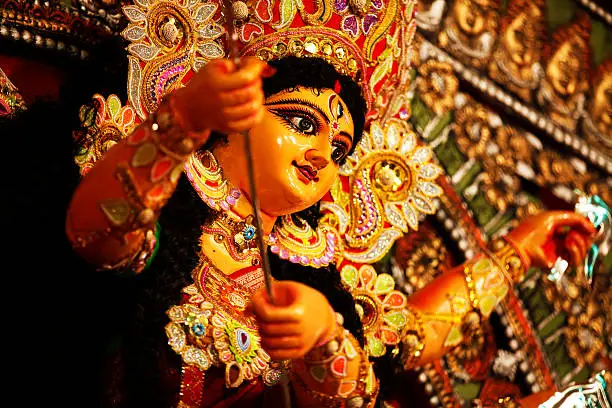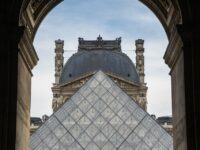India’s Durga Puja Festival Reimagines Trump as the Modern Demon

During the annual Hindu festival of Durga Puja in West Bengal, a striking new sculpture drew attention this year. Traditionally, the festival celebrates the goddess Durga’s triumph over the demon Mahishasura, symbolizing the victory of good over evil. However, in a bold contemporary twist, this year’s depiction replaced the traditional demon with a figure resembling former U.S. President Donald Trump.
The statue, revealed in Murshidabad, shows Durga atop her lion, wielding her ten celestial weapons, confronting a caricatured Trump with his signature blond hair and imposing posture. Organizers say the piece reflects contemporary political tensions rather than mere satire. “India and America had strong ties, but Trump’s policies are trying to suppress India,” said Sanjay Basak of the installation’s organizing committee. “This depiction shows Trump as the demon being vanquished by Durga.”
From Diplomacy to Discontent
Durga Puja transforms cities into open-air galleries, where elaborate pandals (temporary pavilions) reinterpret the goddess’s mythological battle. Over the years, these installations have addressed global and local crises—from wars to pandemics—by using traditional religious imagery to comment on current events. Following clashes along the India-China border in 2020, one popular pandal even depicted Chinese President Xi Jinping as a villain, demonstrating the tradition of blending art and political commentary.
Trump’s portrayal reflects a broader narrative of strained U.S.-India relations. Once, the former president and Prime Minister Narendra Modi celebrated a strong personal bond at events like the 2019 “Howdy Modi” rally in Houston and the 2020 “Namaste Trump” visit in Ahmedabad. But tensions grew as Trump returned to office, criticizing India’s economy, imposing high tariffs, and targeting the country over Russian oil imports. Trump’s administration also introduced steep fees for H-1B visas, affecting thousands of Indian professionals, further fueling perceptions of antagonism.
Art as Political Expression
The artistic team behind the Trump installation worked in secrecy for three months, only sculpting the former president’s recognizable features in the final week before unveiling. When the installation went public, it drew massive crowds, with visitors lining up to see the depiction firsthand. Basak described the response as overwhelming and affirming. “It resonated with people and generated a conversation that was both artistic and political,” he said.
Political expression through art has deep roots in Bengal. Historically a center of intellectual resistance, the region’s cultural movements—from the anti-colonial struggle to communist governance—have long embraced public critique through literature, music, and visual arts. Figures such as Bankim Chandra Chatterjee and Rabindranath Tagore shaped Bengal’s tradition of using cultural expression to challenge authority, a legacy that continues in Durga Puja’s contemporary installations.
This year, the Trump statue embodies that same spirit, turning a religious festival into a platform for social and political dialogue. In the eyes of many, Durga’s symbolic victory over Trump’s “regressive” policies transforms mythology into modern commentary. As Basak put it, “Now that Trump is imposing tariffs upon tariffs, this is the big issue of the day. It’s only fitting that we depict it this way.”
By merging faith, artistry, and critique, West Bengal’s Durga Puja demonstrates how cultural traditions can evolve, using myth to reflect contemporary anxieties and inspire public reflection.









